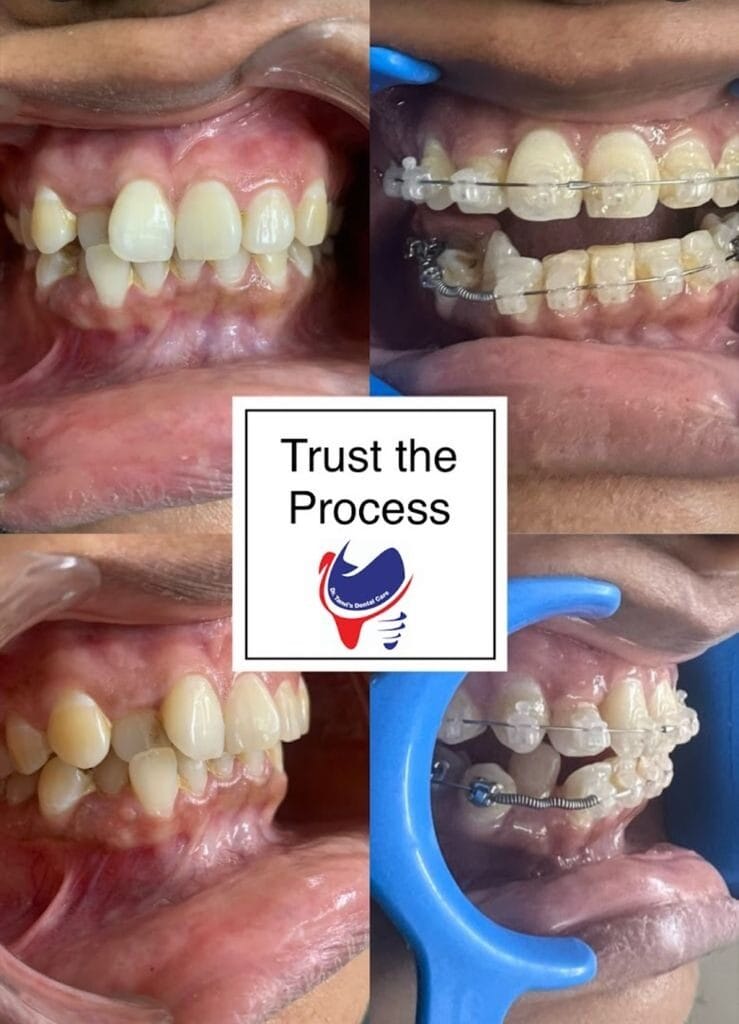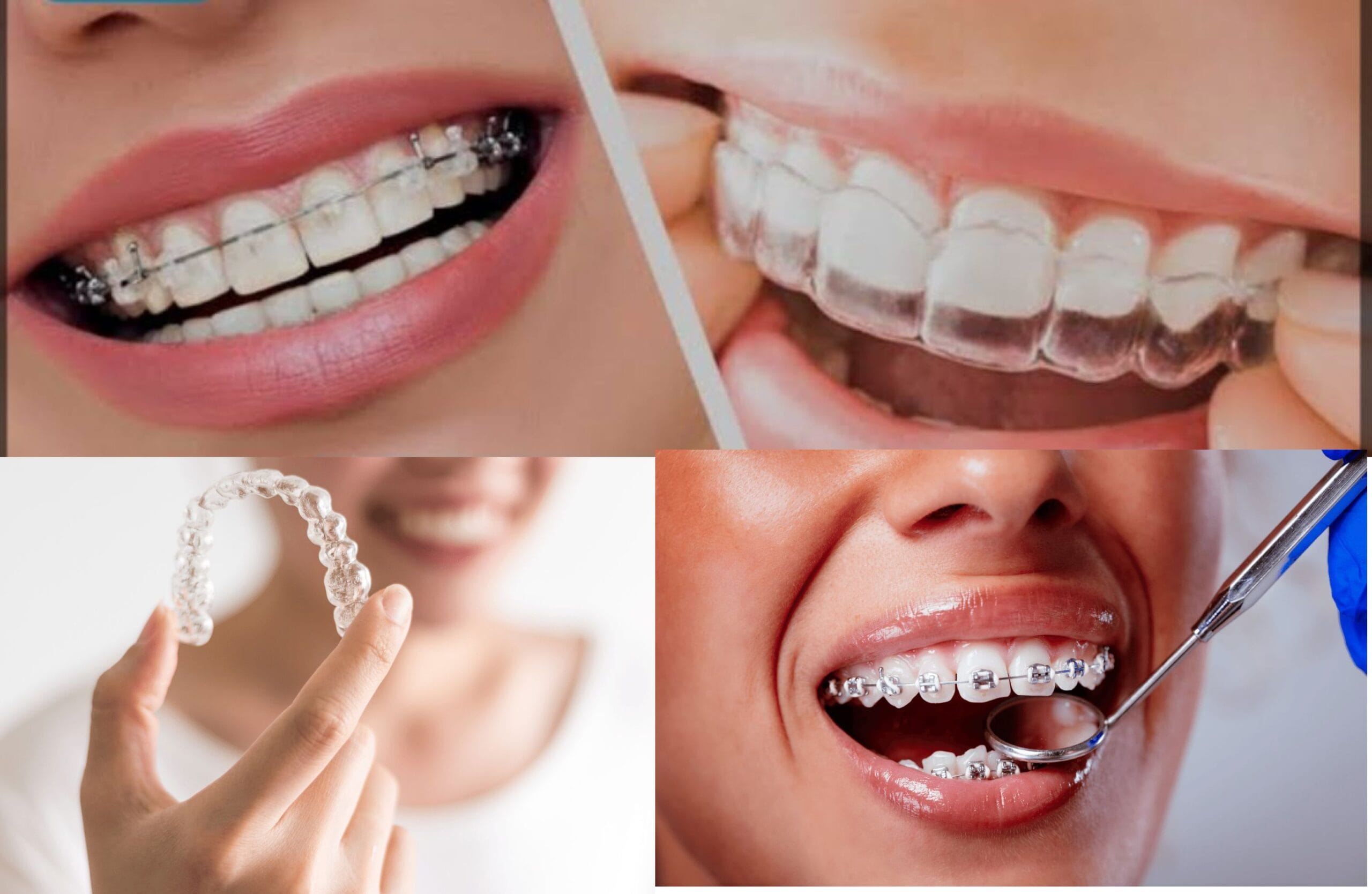Braces & Aligners
What are Dental Braces?
Dental Braces are a type of orthodontic treatment to straighten teeth. They consist of wires, brackets, and bands. Braces (Teeth Clip) correct a wide range of Dental issues. It includes teeth straightening, jaw positioning, aesthetics, and facial symmetry etc. Teeth Braces improve chewing efficiency, speech clarity, and smile symmetry by gradually shifting teeth into the right position with gentle pressure applied over time.
The Person who specializes in braces is called an “Orthodontist”. Your orthodontist examines and suggests the best treatment plan as per your oral condition.


What are Dental Braces / Teeth Braces used for?
Dental braces (Teeth Clip) corrects several orthodontic issues, including:
- Crooked Teeth
- Crowded Teeth
- Gapped Teeth
- Rotated Teeth
- Facial Appearance and Aesthetics
- Open Bite
- Crossbite
- Deep Bite
- Maxillary/Mandibular Protrusion
- Midline Diastema etc.

How Do Aligners Work?
Aligners work by applying gentle, controlled pressure to move your teeth over time. Each set of aligners is worn for about 1 to 2 weeks before being replaced with the next set in the series, slowly shifting your teeth toward the final, desired position. The treatment plan is customized using advanced 3D imaging technology, allowing you to see a preview of your expected results even before starting the treatment.
Benefits of Aligner Treatment:
Aligner treatment offers several benefits compared to traditional braces:
Clear and Discreet:
Aligners are nearly invisible, making them a great option for people who prefer a more discreet orthodontic solution.Removable:
You can remove your aligners when eating, drinking, brushing, and flossing, making it easier to maintain good oral hygiene and enjoy your favorite foods without restrictions.Comfortable:
Aligners are made from smooth, BPA-free plastic, so they are less likely to irritate your gums and cheeks compared to traditional braces.Custom-Fit:
Each set of aligners is specifically made to fit your teeth, ensuring precise movement and comfort throughout the treatment.Effective for Various Conditions:
Aligners can correct a variety of orthodontic issues, including crowding, gaps, overbites, underbites, crossbites, and open bites.

Who is a Good Candidate for Aligners?
Aligner treatment is suitable for both teens and adults who want a discreet way to improve their smile. It’s a great option for mild to moderate alignment issues, and many patients find it to be a more comfortable and convenient alternative to braces. However, for more severe orthodontic cases, traditional braces or other treatments may be recommended.
Steps in the Aligner Treatment Process:
Consultation and Examination:
Your dentist or orthodontist will examine your teeth and take digital impressions, X-rays, or photographs to determine if aligners are right for you.Treatment Plan:
A customized treatment plan will be created using 3D imaging technology, allowing you to see a digital preview of how your teeth will move and what your smile will look like post-treatment.Aligner Fitting:
Once your aligners are ready, you will be given a series of aligners to wear in sequence. Each aligner is designed to move your teeth slightly, and they should be worn for 20-22 hours per day for best results.Regular Check-Ups:
Periodic check-ups will ensure that your teeth are moving as planned. You’ll receive new aligners during each visit, typically every 6-8 weeks.Completion and Retention:
Once your treatment is complete, you may need to wear a retainer to maintain your new smile and prevent your teeth from shifting back to their original positions.
